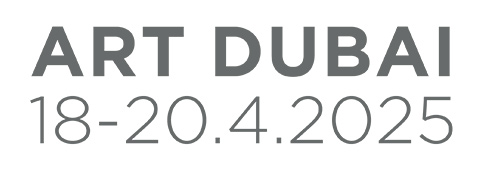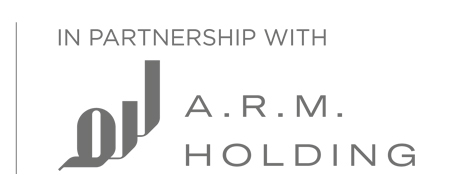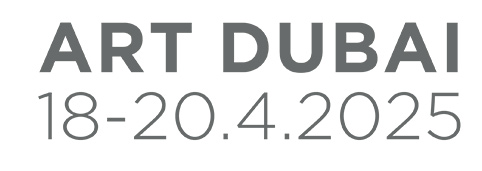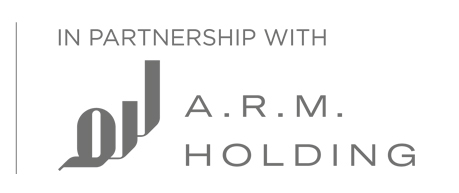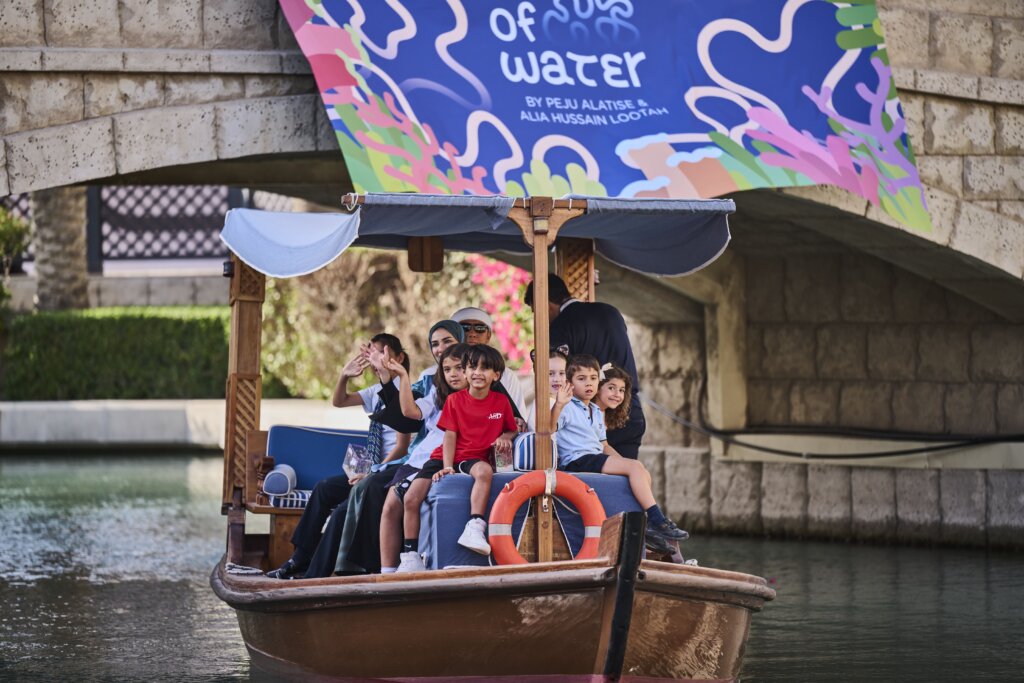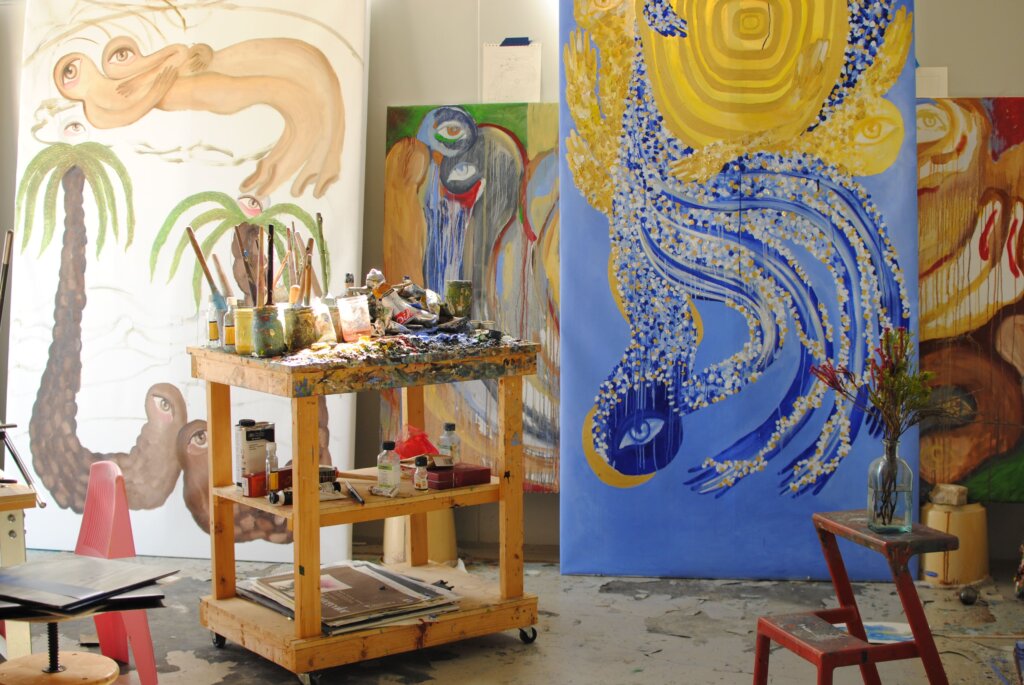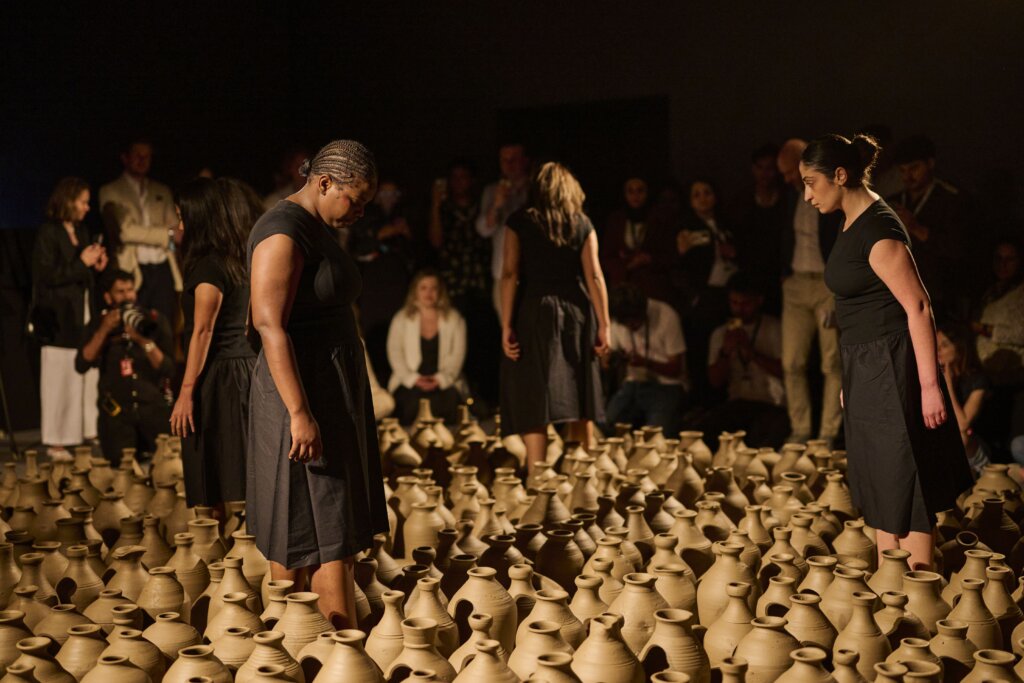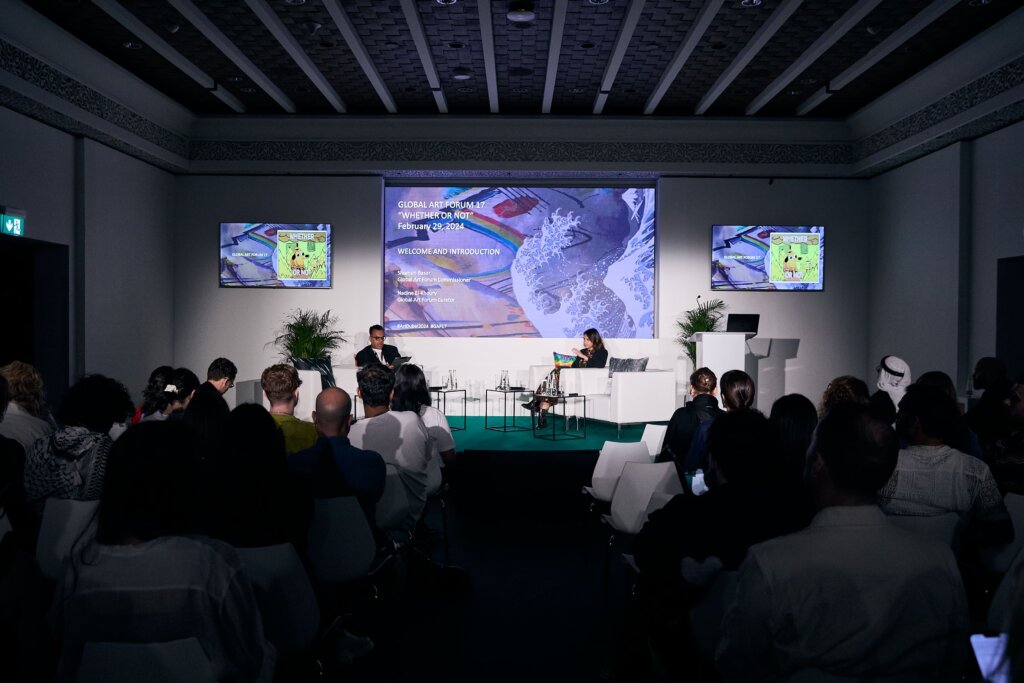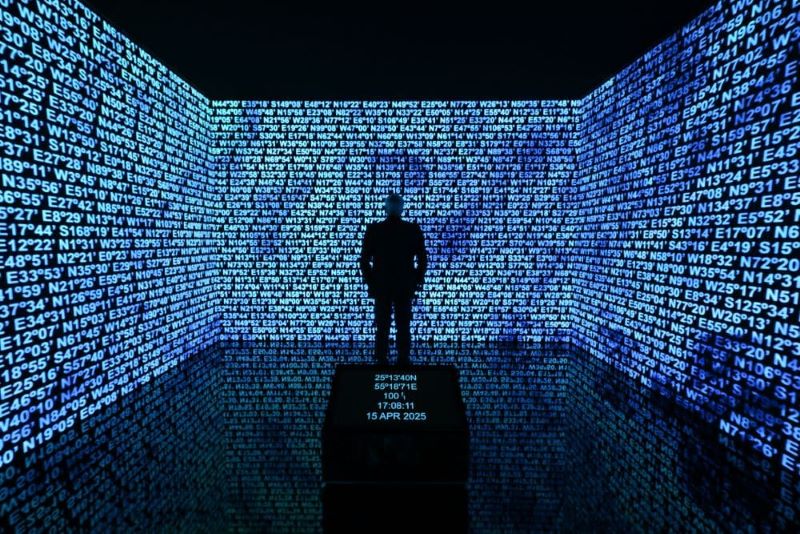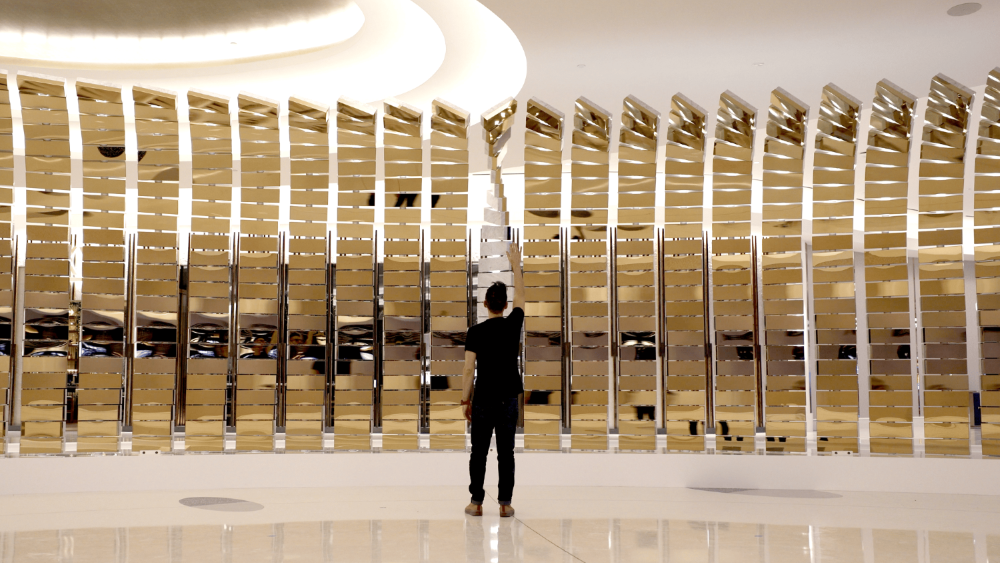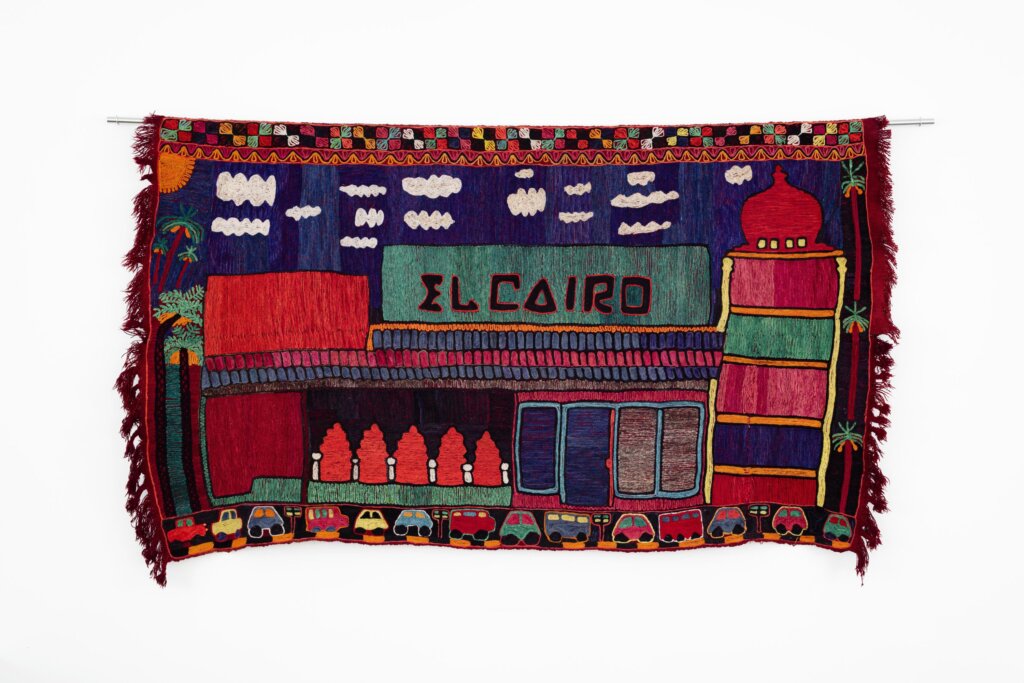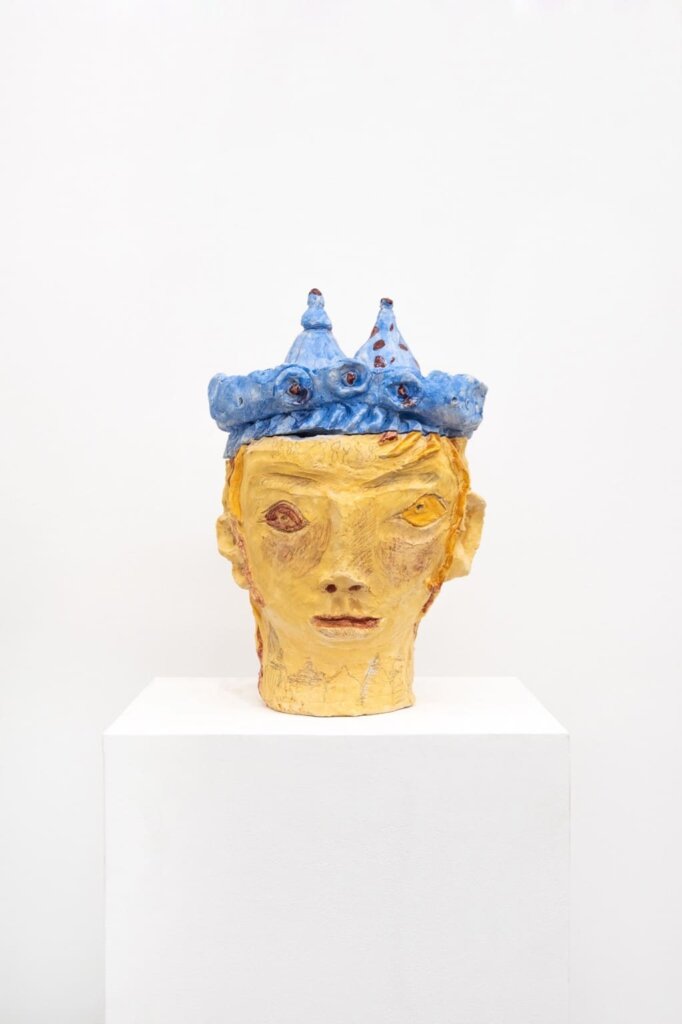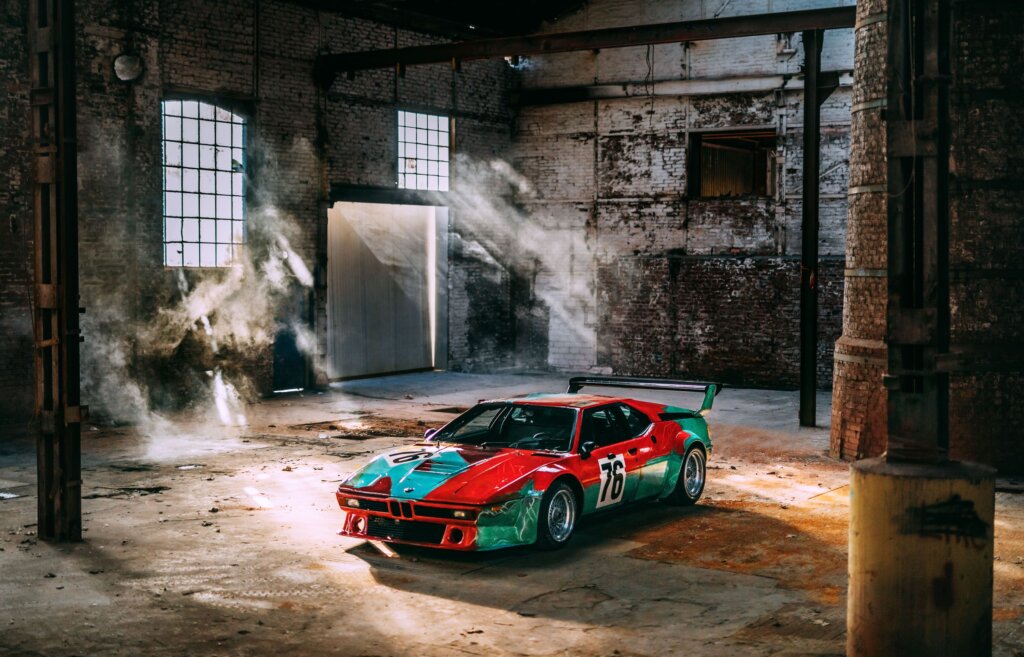Art Dubai spoke to Élise Atangana, the Curator of Art Dubai’s inaugural Bawwaba section, as well as Fernanda Brenner and Munira Al Sayegh, Co-Curators for the 2019 edition of Residents about their respective curatorial views and practices and their plans for the fair.
Élise Atangana
Your selection of presentations for Bawwaba will naturally reflect your curatorial perspective. How would you describe that perspective?
My researches focuses on mobilities and urban societies. Currently, I am working on the temporality of the spatial dimension through non-place, dystopia or ephemerals spaces. Works I chose for Bawwaba look at the materiality of the object as a trace of memories and artists’ propositions explored different perceptions of temporality as well as historical, political or intimate narratives.
What were the primary parameters for your selection?
The ten artists selected come from Turkey, Algeria, Pakistan, Chile, Ethiopia, Kuwait, Brazil, UK, and São Tomé and Príncipe. I didn’t know most of the selected artists personally, but wanted to de-centre my gaze to another direction as well as engage in a conversation with artists on their practice. The idea was to find a narrative, which resonates everywhere. I didn’t impose anything and leant on gallery expertise.
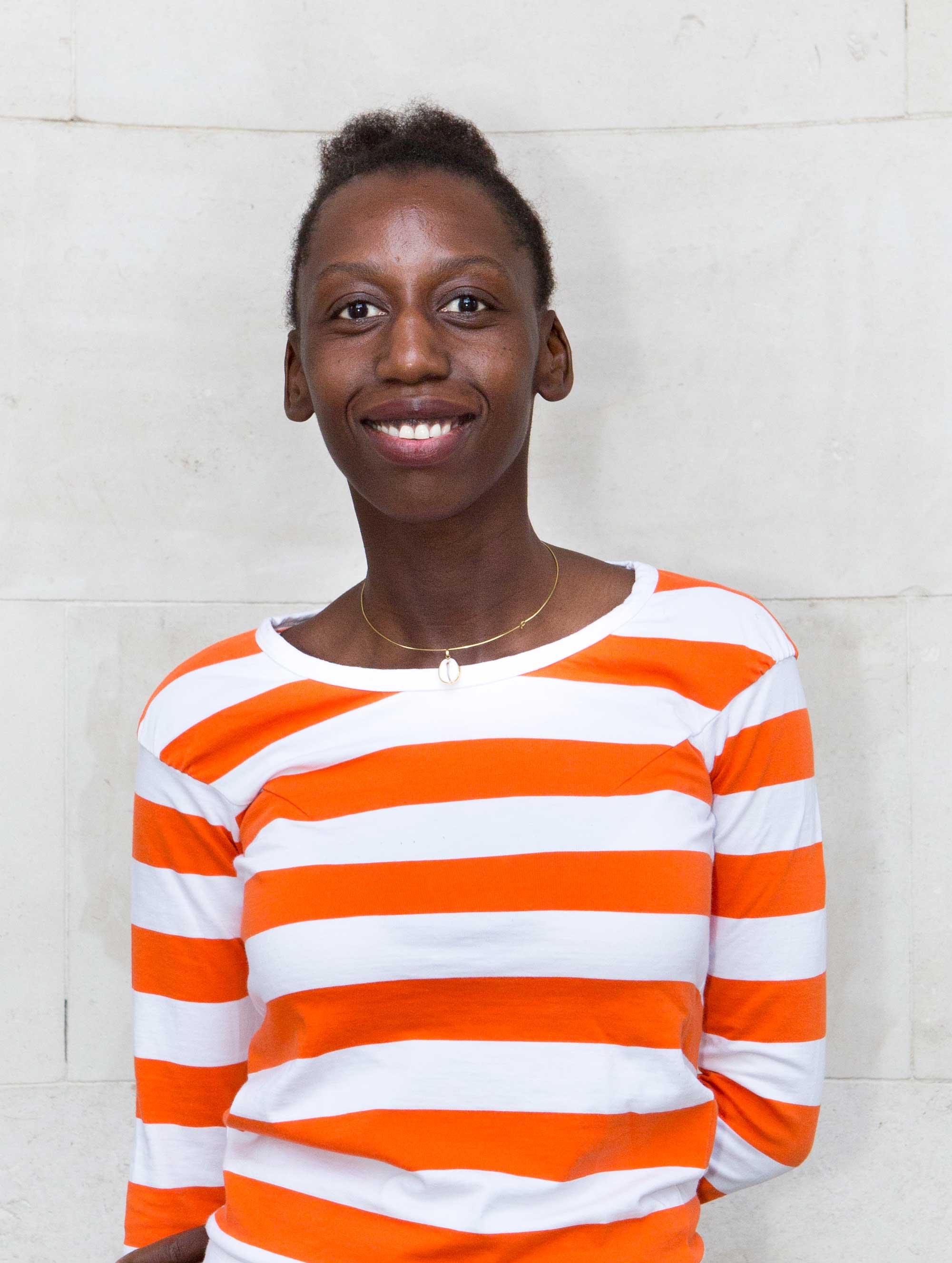
Élise Atangana. Portrait by Eva Bartussek
Are you aiming for fresh dialogue to spring up between the work of the artists that you have chosen, or should they be viewed as ten separate presentations?
Most of the work will be produced especially for the Bawwaba section. Each project will be presented in a booth and converse on the notion of passage of time. Some artists subtly interrogate the notion of Global South, which resonates deeply with the former colonized countries. The idea is to put forward the singularity of the works and the artistic practices.
With your interest in movement and transience of populations, how much did the city of Dubai’s dynamic characteristics influence your decision for the Bawwaba selection?
Dubai is one of the archetype of a futurist megalopolis, which naturally influences my decision. The perspective to surrender, to experiment the archipelago or interact in such local and global context is exciting.
How do you feel personally about being chosen for this inaugural project for Art Dubai?
I’m honored to have been invited to participate in Art Dubai. This project allowed me to open a new perspective geographically and artistically. For the visitors, my intention is to propose an experience that will make them think and not leave them indifferent.
Fernanda Brenner
Through the selection of galleries that you have made for the Residents section, will audiences be able to grasp a wide cross-section of art production in Latin America?
The selection of galleries made for the Residents section brings together a wide and varied group of artists, working with different media and coming from different backgrounds. Even though they share a continental territory, each country in Latin America is very different and full of complexities, so my intention is to deconstruct this idea of homogeneity and instead highlight the singularities. Still, it is crucial to approximate these productions so that they can inform each other and bridge communication gaps within Latin America.
Part of the aim of your selection is to reveal connections between art practices in Latin America and the UAE. What is the main emphasis of these connections?
We very much look forward to accompany and engage with the local scene in the UAE, and the outcome of the encounters is most certainly unpredictable. What I am interested in is creating an atmosphere of coexistence between artists themselves and the surrounding reality, the works produced will be embedded in these interactions. I always make myself available to provide starting points, and it’s up to the artists to unfold these as they please.
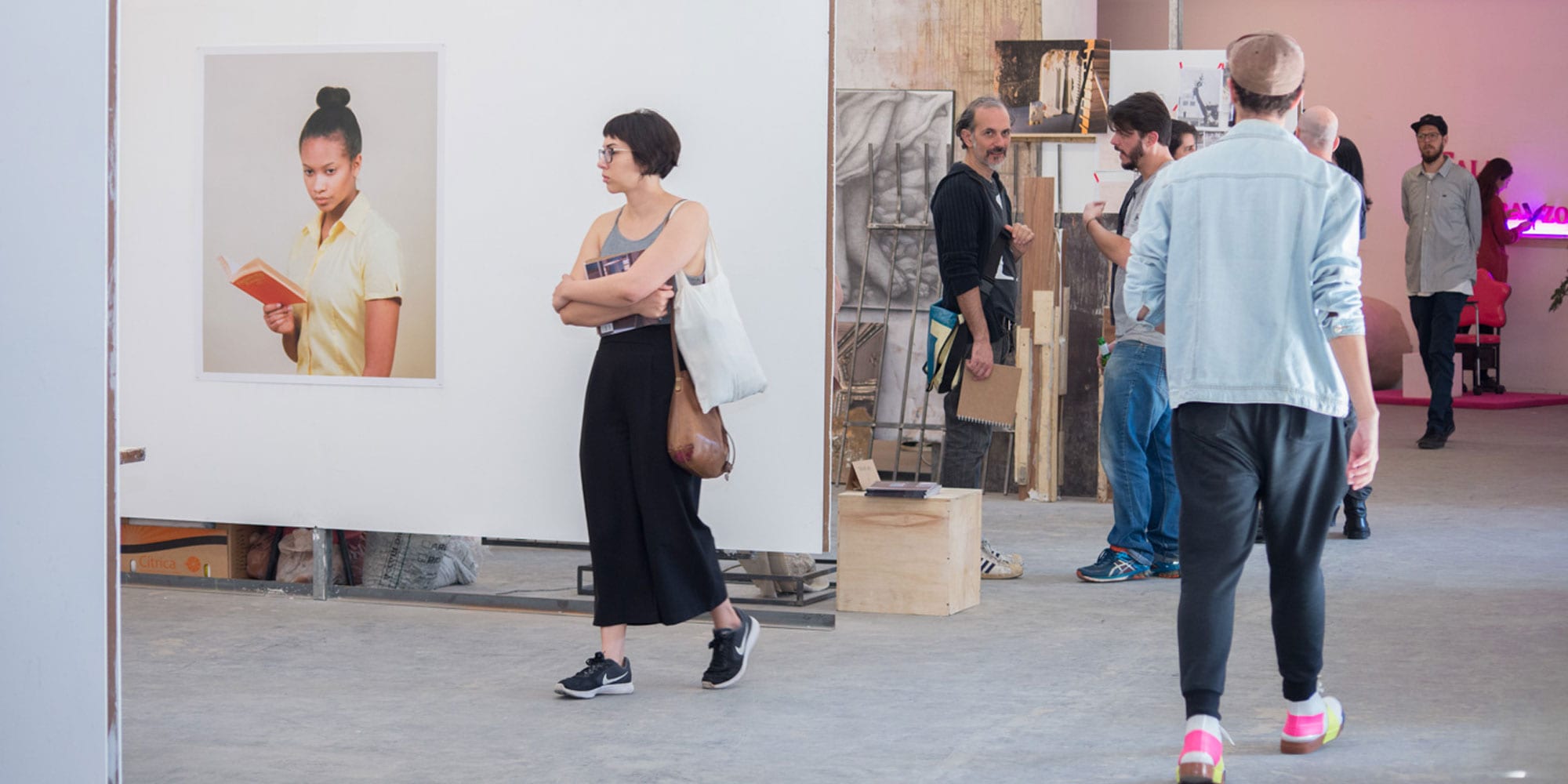
Open Studio at a Pivô Research Programme. Courtesy of Pivô
With so much international experience, how do you describe the artistic landscape in Dubai and the Middle East?
Unfortunately I have not had the chance to get to know the artistic landscape in Dubai or the Middle East deeply, so I will take this opportunity to learn and listen. I am working closely with a local interlocutor Munira Al Sayegh, who has been crucial to bridge knowledge gaps and gradually introduce me to the context.
How can Latin American art complement and add to this current scene?
I believe that by building bridges and establishing consistent, open and horizontal human relations in all its complexity, we will be able to complement and interact productively, this may happen from harmony and conflict, consensus and dissensus but what matters most is that these artists and practices will inhabit a new situation of work and from this knowledge can be produced without imposition.
As someone who has dedicated yourself to helping to launch independent artistic production through Pivô (a non-profit art space), what does it mean to you personally to be involved in Residents?
I have been working with residencies for a long time to understand what works and what doesn’t. Pivô has taught me how to work with artists from the whole world and to work with Art Dubai is a great opportunity to learn from the context and get closer to the scene.
Do you consider that being born and raised in Dubai affects the way you work as an artist?
On outward-facing material, I try to mention “born and raised in Dubai” at all times, as living here and seeing works of other artists who are born/raised here is what made me feel like being an artist was an accessible career path. That moment resonated with me and I hope I can recreate the same experience for others interested in pursuing the arts.
Munira Al Sayegh
As the point of contact on the ground for the Residents artists, how responsible do you feel to show them the “most memorable” parts of the UAE? Or are you planning a more naturally immersive experience?
I think that the UAE is a place that extends itself in many ways. New pockets are always emerging and introducing themselves in the most surprising ways. The best way to experience the UAE is actually to stay away from everything that is obvious and to allow your curiosity to take over and guide you into the spaces of in between that create real, raw memorable moments. So to a degree, I am responsible to lead the Resident artists in the right direction, but the rest is up to their own curiosity.
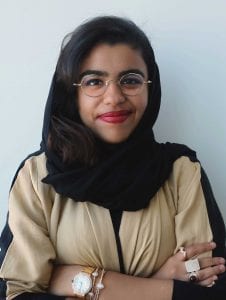
Munira Al Sayegh
Do you feel like you need to break down any preconceptions that artists from abroad may have of this region?
I believe upon arrival into the UAE the artists will already begin to realise that the negative stereotype this region is framed under is not the actual truth of our day-to-day lives. I believe in basic human exchange, and I feel from that, all preconceptions of this region will be challenged, and changed.
How do you feel the new curatorial structure of Residents will strengthen the section, which is now only in its second year?
The new curatorial structure has created a platform which really allows for exchange between cultures. Naturally within exchange, a dialogue will develop and will elevate the section.
This experience will undoubtedly spill over into your mentorship of the participants of Campus Art Dubai. Do you envision opportunities for exchange that will enrich the practices of both sets of artists?
Absolutely. I do not see a separation between the two bodies, and I believe that both sets of artists will really learn from one another, bringing skillsets of a different nature to the table, and it is essential that they come together to discuss their practices and exchange.
Being positioned between the two organic sections of Art Dubai puts you at an interesting standpoint. What does it mean to you personally to be involved at this level?
At the root of all my work, exchange, dialogue and the creation of a network are vital. The production of a local and regional narrative is precisely what is needed for the arts – a voice that is real, that is rooted, and that is relevant. Being positioned between the two organic sections of Art Dubai really allows me to further fuel what I am trying to do within this ecosystem.
